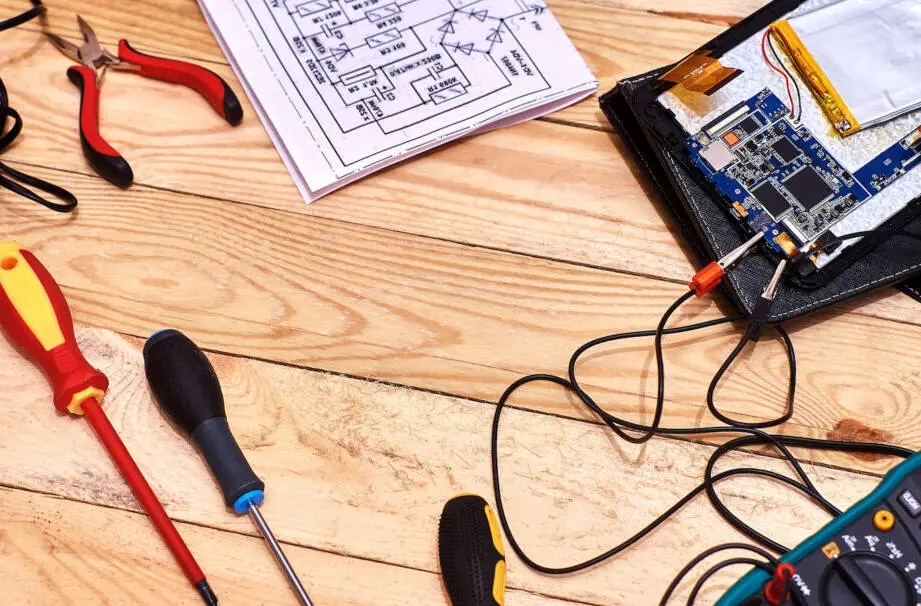Electrical systems are an integral part of our modern world, powering the devices and appliances that shape our daily lives. Whether you’re an electrician or a DIY enthusiast, you may encounter situations where you need to identify live wires, ensuring safety before starting any electrical work. While several methods exist, one commonly used technique is to test a live wire with a screwdriver. In this article, we’ll explore the step-by-step process of how to safely perform such a test, providing you with the knowledge and confidence to handle live wires responsibly and protect yourself from potential electrical hazards. So, let’s delve into this essential skill and empower you to work safely with live wires.
Testing a live wire with a screwdriver: Step-by-step guide
Welcome to this informative video on how to safely test a live wire using a screwdriver. Join us as we walk you through the necessary steps to ensure your safety and accurate results.
Evaluating Voltage with a Screwdriver
Sure! Here’s an explanation of the section Evaluating Voltage with a Screwdriver in HTML format:
«`html
Evaluating Voltage with a Screwdriver
One common method of evaluating voltage is using a screwdriver as a tool. This technique is often employed by electricians or individuals who need to check whether an electrical outlet is live or not.
To perform this test, you’ll need a screwdriver with a non-conductive handle, preferably made of plastic. Here’s how it works:
1. Ensure that the power is turned on to the outlet you want to test.
2. Take the screwdriver and insert it into one of the slots of the outlet.
3. Keep your fingers away from the metal part of the screwdriver to avoid any potential shock.
4. Observe the tip of the screwdriver. If there is voltage present, the tip will light up or produce a sound, indicating that the outlet is live. If there’s no reaction, it suggests that the outlet is not live, and it’s safe to proceed with any necessary work.
Please note that this method should only be used as a preliminary evaluation and not as a definitive test for voltage. For a more accurate measurement, it’s recommended to use a voltage tester or a multimeter.
Always prioritize your safety when working with electricity. If you’re unsure or inexperienced, consult a professional electrician for assistance.
«`
This HTML format organizes the content into paragraphs, making it visually pleasing and easy to read on a website or blog.
Assessing Electrical Currents Using a Screwdriver
Assessing Electrical Currents Using a Screwdriver
When working with electrical equipment or wiring, it is important to be able to assess the presence of electrical currents. One common tool used for this purpose is a screwdriver.
Firstly, it is essential to ensure that the screwdriver being used is specifically designed for electrical work. These screwdrivers are typically crafted from non-conductive materials, such as plastic or fiberglass, and have insulated handles.
To use the screwdriver to assess electrical currents, follow these steps:
1. Begin by turning off the power to the circuit you are working on. This can be done by switching off the corresponding breaker in your circuit breaker panel.
2. Once the power is off, carefully touch the tip of the screwdriver to the component or wire you wish to assess. Be cautious not to touch any other metal surfaces with your hand or body while doing this.
3. If the screwdriver lights up or vibrates, this indicates that there is electrical current present. Exercise extreme caution in this situation as it means the circuit is still live.
4. If there is no indication of electrical current, it is safe to proceed with your work. However, it is always wise to double-check using a reliable voltage tester before making any assumptions.
Remember, using a screwdriver to assess electrical currents should only be done by trained professionals or individuals with a sound understanding of electrical systems. If you are unsure or inexperienced, it is best to consult a qualified electrician for assistance.
By following these guidelines, you can utilize a screwdriver as a tool to assess electrical currents, helping to ensure your safety while working on electrical projects.
Gauging Live Wires with a Phillips Head
Gauging live wires with a Phillips head screwdriver is a practice that should never be attempted. It is extremely dangerous and poses a significant risk of electric shock or even electrocution.
A Phillips head screwdriver is specifically designed for turning screws with a Phillips head, and it is not equipped to handle electrical currents. Attempting to gauge live wires with a Phillips head screwdriver can result in the screwdriver coming into contact with the live wire and causing a short circuit or electrical discharge.
When dealing with live wires, it is crucial to prioritize safety. Proper tools and equipment, such as voltage testers or multimeters, should be used to gauge live wires. These tools are specifically designed for electrical work and have built-in safety features to prevent accidents.
If you suspect a wire is live, it is best to seek help from a qualified electrician who has the necessary expertise and equipment to handle such situations safely. Attempting to gauge live wires without proper training and equipment can have severe consequences and should be avoided at all costs.
Testing a live wire with a screwdriver – what is the procedure?
Ultimately, testing a live wire with a screwdriver is a dangerous and highly discouraged practice. It poses serious risks of electrocution and could lead to fatal injuries. It is important to prioritize safety and rely on proper testing equipment like voltage testers or multimeters to ensure accurate results without putting yourself at risk. Remember, when it comes to electricity, it’s always better to be safe than sorry.
🧡 Qué Quieres Ver?
